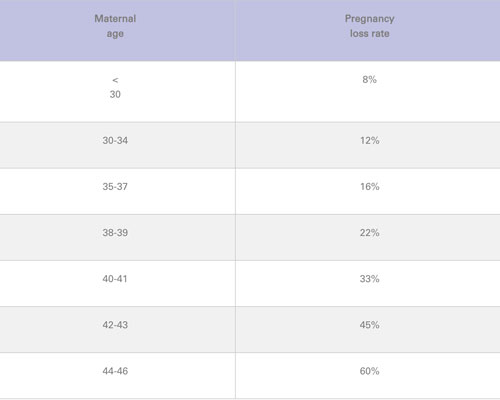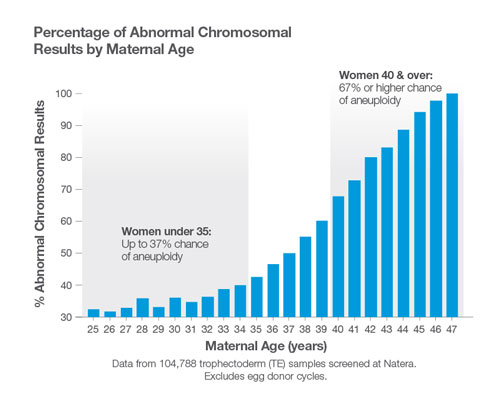
Female Age and Miscarriage and Fertility
- Home
- Patient Education
- Causes of Infertility
- Female Age and Miscarriage

As women get older the incidence of chromosomally abnormal eggs increases dramatically. This results in lower chances for getting pregnant at all, as well as increasing the risk of miscarriage.

The graph below shows information about miscarriage rates after IVF (using own eggs) from the 2012 CDC report.
Miscarriage rates for women with a history of infertility tend to be higher than for fertile women.
The main reason for the increased risk for miscarriage in “older” women is due to the increase in chromosomal abnormalities (abnormal karyotype) in their eggs. Note the similarity in the shape of the curve in the graph above to the one below showing the rate of chromosomal abnormalities in IVF embryos by age.
Many studies have documented the increased rate of chromosomal abnormalities in women of advanced reproductive age. The graph below shows the rate of chromosomally abnormal IVF eggs by female age (compiled from several studies).We do not know exactly why there is an increase in chromosomal abnormalities in the eggs of women as they age. However, research studies have clarified some of the issues involved.

We do not know exactly why there is an increase in chromosomal abnormalities in the eggs of women as they age. However, research has clarified some of the issues involved.
Preimplantation genetic screening (PGS) can test IVF embryos before transfer to determine if they are chromosomally normal or not.